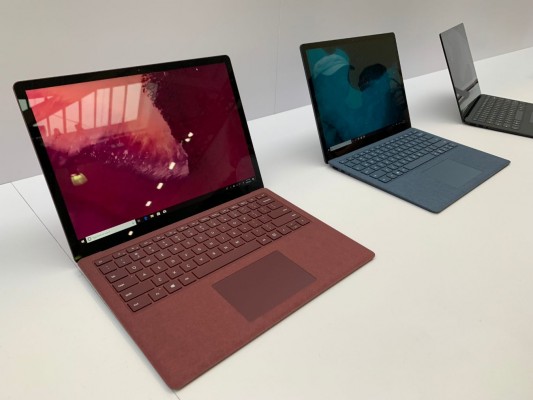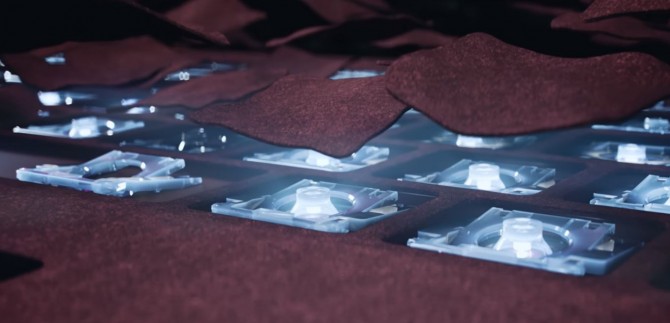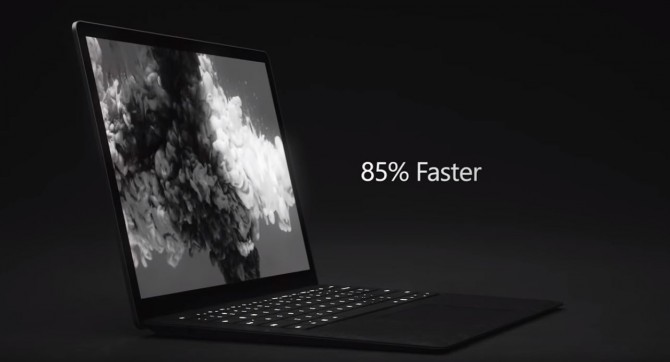Microsoft Surface Laptop 2 vs. Surface Laptop: What's New?
Last year, Microsoft introduced the world to the Surface Laptop, a portable clamshell device with a deck made of Alcantara fabric. We were smitten with its striking design, and impressed by its bright and colorful display and strong battery life.
With the newly unveiled Surface Laptop 2, Microsoft promises a better keyboard and huge improvements to performance. But perhaps the most mouth-watering addition is the new matte black color variant. Are these changes enough to recommend the new model over its predecessor? Here is how the Surface Laptop 2 compares to the original Surface laptop.
Design
If it ain't broke, don't fix it. The Surface Laptop 2 is a spitting image of last year's device, except now there is a matte black color option. Slim, lightweight and coated in soft-touch fabric, the Surface Laptop begs for attention but blends into professional settings with its sophisticated design. As with the original Surface Laptop, the deck is coated in colored Alcantara fabric, the same material Microsoft uses on the Surface Pro keyboard. If your first thought is "Won't it get filthy?" don't worry, the fabric is stain resistant.
Unfortunately, the Surface Laptop 2 doesn't come with the USB-C port everyone was expecting and hoping for. The Surface Laptop 2 retains the same selection of ports as the original machine: a USB 3.0 port, a mini DisplayPort and a headphone jack on the left side, and a Surface connector on the right.
Along with the snazzy new all-black color scheme, the Surface Laptop 2 is available in platinum, burgundy and cobalt blue. Bad news for those of you who choose gold over silver — the Surface Laptop 2 isn't offered in last year's graphite gold finish.
Specs and Features
Sign up to receive The Snapshot, a free special dispatch from Laptop Mag, in your inbox.
When comparing specs, the Surface Laptop 2 provides some smart performance upgrades, but almost everything else is identical to the previous Surface laptop. That includes its design, which is still 0.6 inches thick and weighs in at 2.8 pounds. The 13.5-inch display on the Surface Laptop 2 has a familiar 2256 x 1504 resolution, but its 1,500:1 contrast ratio should make a gorgeous panel even better. For what it's worth, Microsoft claims it's using the thinnest LCD panel on a touchscreen laptop.
However, inside the Surface Laptop 2 are higher-end specs, including quad-core CPUs that are expected to be 85 percent faster than last year's. Like the original Surface Laptop, the Surface Laptop 2 is available with up to 1TB of SSD storage and up to 16GB of RAM. The Surface Laptop 2 relies on Intel UHD Graphics 620 GPU to run games.
We're looking forward to testing the Surface Laptop 2's keyboard, which offers 1.5mm of key travel, our recommended amount. When it comes to endurance Microsoft says the new Surface Laptop can stay powered for 14.5 hours on a charge during video playback.
Windows Hello in the form of facial recognition should make it a breeze to sign into the Surface Laptop 2.
Outlook
While the new matte black color scheme introduced to the Surface Laptop 2 is sure to grab your attention, the improvements made under the hood are especially intriguing. The Surface Laptop 2 is equipped with a quad-core 8th Gen Intel CPU, which Microsoft says is 85 percent more powerful than the previous Surface laptop. Additionally, the 3.4 million pixel display has a contrast ratio of 1,500:1 and the Surface Laptop 2 is expected to have 14.5 hours of battery life.
If you were hoping for a redesign, the Surface Laptop will disappoint. The laptop has the same blueprint as its predecessor, and therefore, lacks a USB-C port. That means you'll need a dongle to charge your new smartphone or headphones. The Surface Laptop 2 will start at $999 and is available for pre-order today for shipment on Oct. 16.
We will provide a definitive verdict on the Surface Laptop 2 once we get our hands on a review unit, so stay tuned!
Phillip Tracy is the assistant managing editor at Laptop Mag where he reviews laptops, phones and other gadgets while covering the latest industry news. After graduating with a journalism degree from the University of Texas at Austin, Phillip became a tech reporter at the Daily Dot. There, he wrote reviews for a range of gadgets and covered everything from social media trends to cybersecurity. Prior to that, he wrote for RCR Wireless News covering 5G and IoT. When he's not tinkering with devices, you can find Phillip playing video games, reading, traveling or watching soccer.






